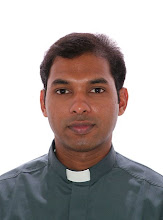Indian culture has the special character to adapt whatever new things enter into her heat in its real meaning and sense. So as in the case of Christmas even though if it is came from outside. In India Christmas is celebrated with most enthusiasm and joy. Even though the Christmas is not a major festival of India, and even the Christians are less than two percentage, the Christmas has become an important festival over the years. Even though Christmas is a festival of Christians, now people from other religions and communities participate in the Christmas festivities with marked fervor and zest.
Christmas celebration in India may be celebrated a little differently in different states of India and is heavily influenced by Indian culture. Christmas celebrations in urban areas are very similar to those in the West when we compare with the rural areas. Streamers, lights, balloons and buntings are used to add a festive look to shopping centers. Special discounts, bargain offers and bonuses are offered to make shopping more attractive. Even if the friends and relatives exchange presents, it is not much particular as we see in the western countries. Santa Claus distributes gifts and sweets to children especially in the church after the vigil mass. And in most of the churches they singing the carols as the part of the ritual. And in Christmas day it is customary for families to eat Christmas dinner together, all the members even if they are working so far, on this day however they find opportunity to be at home with parents. Elaborate puddings, special cakes and wine are prepared. Roasted chicken is a special item on Christmas day, for the meal. In the coastal regions, people have fish too.
Christmas celebration in India may be celebrated a little differently in different states of India and is heavily influenced by Indian culture. Christmas celebrations in urban areas are very similar to those in the West when we compare with the rural areas. Streamers, lights, balloons and buntings are used to add a festive look to shopping centers. Special discounts, bargain offers and bonuses are offered to make shopping more attractive. Even if the friends and relatives exchange presents, it is not much particular as we see in the western countries. Santa Claus distributes gifts and sweets to children especially in the church after the vigil mass. And in most of the churches they singing the carols as the part of the ritual. And in Christmas day it is customary for families to eat Christmas dinner together, all the members even if they are working so far, on this day however they find opportunity to be at home with parents. Elaborate puddings, special cakes and wine are prepared. Roasted chicken is a special item on Christmas day, for the meal. In the coastal regions, people have fish too.

In the tribal and rural areas of India, the menu is very different. Cakes made of rice flour and bananas form part of the ceremonial feast. As a gesture of good will, these confections are sent to homes which are in mourning. Women also make the kudas and namkeens. In some parts of southern India, payas is distributed among friends and relatives. Carol singing is also popular, but it is accompanied by rhythmic dancing. The dance forms vary from region to region. In the eastern states of Bihar, Assam, Manipur and Nagaland, it is customary to intersperse the feast with tribal dances.












